„Cultural Diversity and/or Community Integrity?” Nationalities, Ethnic Groups and Legal Cultures Living Together in Bonyhád (Late 18th Century – Mid 20thCentury)
Nemzetiségek, népcsoportok és jogi kultúrák egymás mellett élése Bonyhádon (18. század vége – 20. század közepe)
DOI:
https://doi.org/10.15170/DIKE.2017.01.01.05Abstract
In terms of ethnographic tradition, Tolna county is one of the richest and most colourful regions of Hungary. Over the past three hundred years this territory has been occupied by seven nationalities and ethnic groups (Hungarians, Germans, Serbs, Slovaks, Jews, Gypsies, as well as the Szekelys of Bukovina and the Jasz), and five religions (Catholic, Protestant, Evangelical, Greek Orthodox and Israelite). The various communities organised on religious and ethnic grounds created a unique culture in the Valley, whose exploration and account based on specific characteristics and rules makes it particularly suitable for studying cultural diversity and community integrity, and for carrying out researches of legal ethnography, self-identified as an interdisciplinary field of science. The study wishes to contribute to the research outcomes of source communication, analysis and assessment focusing on the history of Jews living in Bonyhád, a religious community considered as the most significant for a long time alongside the communities of Buda, Bratislava and Pápa, complemented with legal ethnographical approach and complex methodology, simultaneously adding verbal information and material investigation to the written sources of legal social norms.



